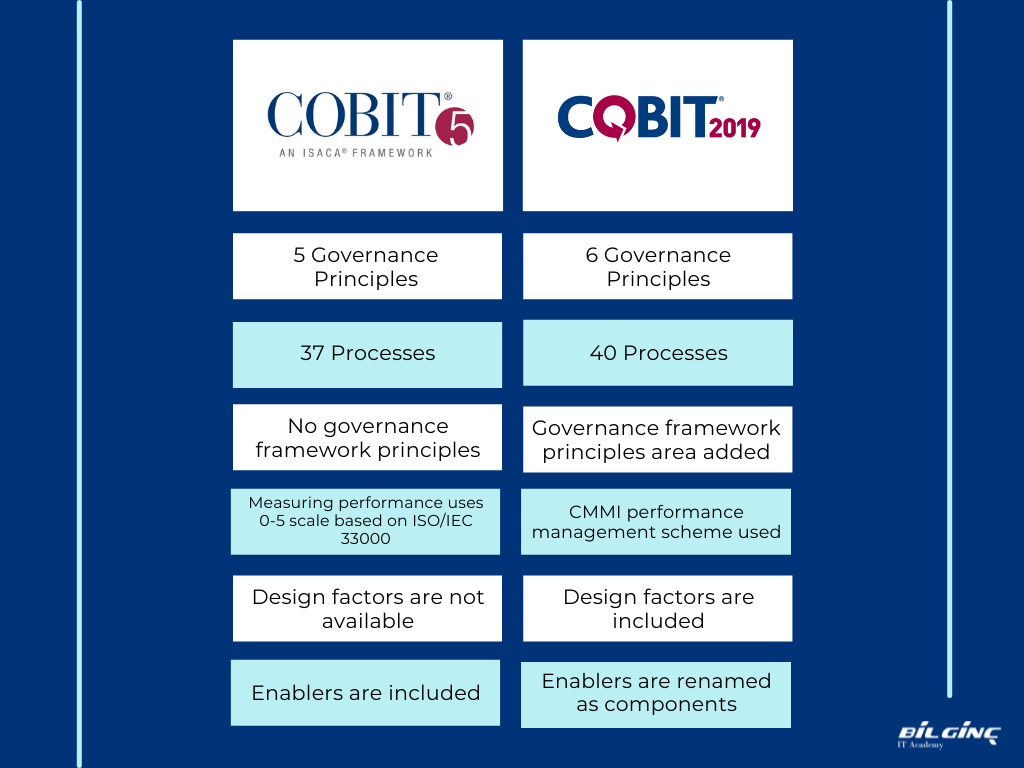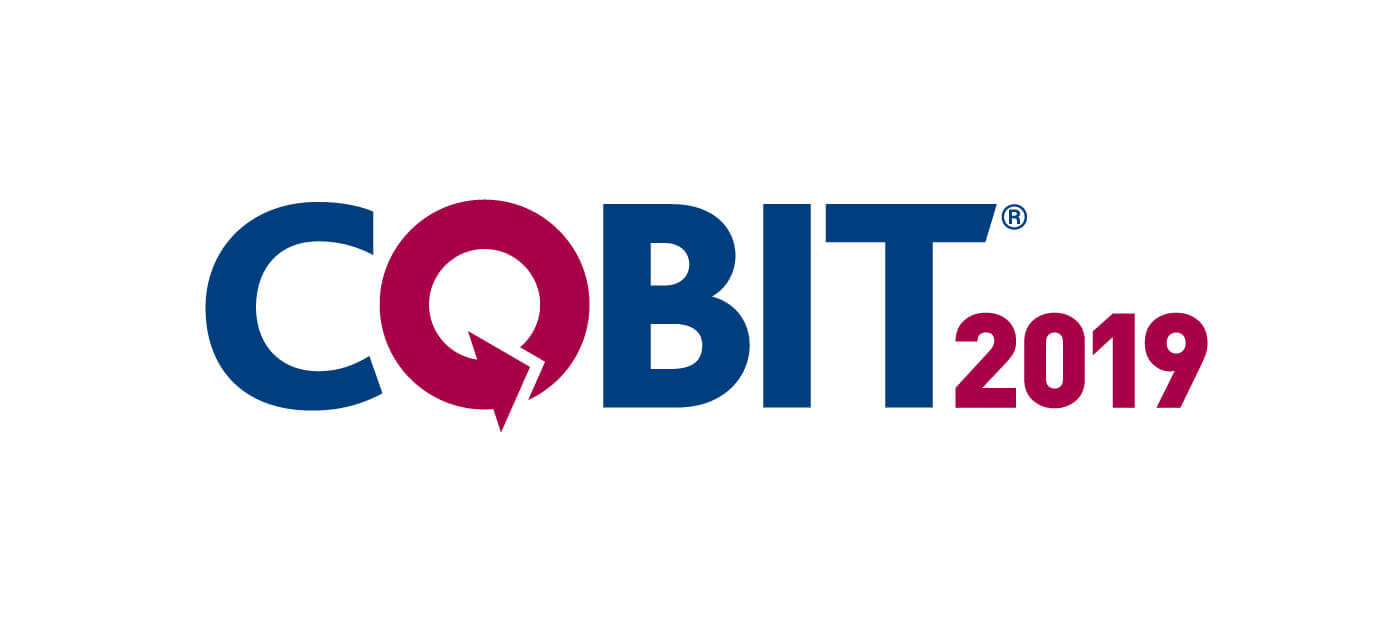What is COBIT?
COBIT (Control Objectives for Information and Related Technologies) is a very popular framework, preferred by all IT business process managers to deliver value to organizations and to better manage risk. The COBIT control model, which is used all over the world, is very popular as it guarantees the integrity of the information system.
Nowadays, the quality and value of the work you do is largely shaped by IT and technology. Technologies such as cloud computing, big data and social media produce high volumes of data and this data makes businesses stand out from the competition. But at the same time, dealing with such high volumes of data causes businesses to grapple with a variety of challenges, especially data governance.
To summarize from this challenge, COBIT, founded by ISACA in the mid-90s, is a framework that aims to help businesses develop, implement and improve IT governance and knowledge management.
When creating COBIT framework, ISACA aimed to create a supportive tool for managers, thereby closing the severe gap between technical issues, business risks and control requirements. It is possible to apply this globally accepted framework to any organization in any industry. The quality, control and reliability of information systems, which is one of the most important elements of modern businesses, can be achieved with COBIT. COBIT identifies the design factors that should be considered by the business in order to create the most appropriate governance system.
COBIT 5 - one of the most popular versions - was released in 2012. Later, COBIT 5 was updated to COBIT 2019 to include new technology and business trends, especially digitalization in information and technology. Unlike COBIT 5, this new version has 6 principles instead of 5.
COBIT 5 Principles
What are the Principles of COBIT 5?
- Meeting Stakeholder Needs
- Covering the Enterprise End-to-End
- Applying a Single Integrated Framework
- Enabling a Holistic Approach
- Separating Governance From Management
In addition to incorporating an additional governance principle into its principles, COBIT 2019 also reconsidered some of the terminology used in defining the principles, which we will explore in the following section. Before we move on to these innovations, let's look at the principle added to the new version.
COBIT 2019 Principles
COBIT® 2019 Framework: Governance and Management Objectives
- Provide Stakeholder Value
- Holistic Approach
- Dynamic Governance System
- Governance Distinct From Management
- Tailored to Enterprise Needs
- End-to-End Governance System
What are the Differences of COBIT 2019?
The newest version of COBIT® 2019 Framework: Governance and Management Objectives, let's take a look at which areas have been improved over previous versions.
Flexibility and openness: In the new version, the COBIT open architecture makes it possible for users to add new focus areas and modify existing ones without changing the core model structure.
Timeliness and relevance: The 2019 version is compatible with all new concepts, especially the latest IT standards and compliance regulations.
Normative implementation: The COBIT 2019 conceptual model is structured to be used for an embodied IT governance system.
IT performance management: With the new release, the concepts of maturity and capability to better align with CMMI are included in the framework.
Performance management in COBIT 2019 is based on the CMMI Performance Management Plan, where skill and maturity levels are measured from 0 to 5. In this area, it differs from the COBIT 5 version because the scale of the International Organization for Standardization (ISO)/International Electrotechnical Commission was valid in the old version.
Governance framework principles have also been added to the COBIT 2019 release. Let's examine these principles together, which you will find in the image below.

- Based on a Conceptual Model: The conceptual model mentioned in this first principle defines the key components and the relationships between these components to maximize consistency and allow automation.
- Open and Flexible: The second principle, openness and flexibility, refers to allowing new content to be added and the ability to handle new topics flexibly. With this feature, COBIT 2019 ensures consistency and integrity.
- Compliant with Major Standards: This third principle states that the new version must conform to major standards, frameworks and regulations.
Let's take a look at the main differences between the COBIT 5 and COBIT 2019 editions in the table below.

To summarize the differences between COBIT 5 and COBIT 2019 models; we saw that in the new version there are 6 management policies instead of 5. The number of processes supporting governance and management objectives was increased from 37 to 40 by making some changes in terminology. Governance principles were added and performance management began to be evaluated according to the CMMI performance management scheme instead of ISO/IEC 33000. 11 design factors affecting the design of the corporate governance system have been added to the COBIT framework and enablers have been renamed as components. Finally, COBIT 2019 has been made available to integrate and harmonize with other international standards, guidelines, and practices that modern businesses often use.
COBIT 2019 Design Factors
- Enterprise Strategy
- Enterprise Goals
- Risk Profile
- IT-Related Issues
- Threat Landscape
- Compliance Requirements
- Role of IT
- Sourcing Model for IT
- IT Implementation Models
- Technology Adaptation Strategy
- Enterprise Size
As we mentioned above, enablers have been removed from the new model to make the COBIT framework simpler. The design factors introduced at COBIT 2019 are those that influence the design of the corporate governance system.
Is It Important to Get COBIT 2019 Certification?
Of course, as the COBIT 2019 framework is highly important for modern organizations, holding the COBIT 2019 Foundation Certificate is very advantageousfor those working in these organizations. The professionals best suited for COBIT methodologies are those who have an understanding of the nuances of IT governance in business management practices.
For which employees is the accredited COBIT 2019 Foundation training and certification of great importance?
- CIOs and IT Managers
- Risk Committee
- Process Owners
- Audit Committee Members
- Employees familiar with COBIT 5 and earlier models
- IT Professionals in the audit, risk, security and governance sectors
What Will You Learn in COBIT Foundation Training?
Participants of the Bilginç IT Academy's COBIT 2019 Foundation course will learn the context, benefits and key reasons COBIT is used as an information and technology governance framework.
In detail, participants will:
Recognize the target audience of COBIT 2019
Recognize the context, benefits and key reasons COBIT is used as an information and technology governance framework
Recognize the descriptions and purposes of the COBIT product architecture
Recall the alignment of COBIT with other applicable frameworks, standards and bodies of knowledge
Understand and describe the governance “system” and governance “framework” principles
Describe the components of a governance system
Understand the overall structure and contents of the Goals Cascade
Recall the 40 Governance and Management Objectives and their purpose statements
Understand the relationship between Governance and Management Objectives and Governance Components
Differentiate COBIT based performance management using maturity and capability perspectives
Discover how to design a tailored governance system using COBIT
Explain the key points of the COBIT business case
Understand and recall the phases of the COBIT implementation approach
Describe the relationships between the COBIT Design and Implementation Guides
Prepare for the COBIT 2019 Foundation exam
As we underlined in this article, COBIT is one of the most popular and globally preferred frameworks for corporate IT governance and management that supports enterprise goal achievement. The 2-day COBIT 2019 Foundation training aims to teach the concepts, models and basic definitions of the new framework. The training will cover 8 key areas of COBIT 2019, which are framework introduction, principles, governance system and its components, governance and management objectives, performance management, designing a custom governance system, business case and implementation. Candidates who want to take the online COBIT 2019 Foundation exam after the training should reserve their exams separately with ISACA. The COBIT 2019 Foundation certification exam is an online, closed-book and remotely supervised exam. The exam which covers eight key areas, is 120 minutes long. In order to be successful in the exam consisting of 75 questions, it is necessary to give 65% correct answers.
Candidates wishing to obtain the COBIT 2019 Design and Implementation Certificate must pass the Bridge exam if they have the COBIT 5 Foundation Certificate, or pass the COBIT 2019 Foundation exam if they are not. They must then attend the COBIT 2019 Design and Implementation course and be successful in the COBIT 2019 Design and Implementation Certification exam.
Does COBIT 2019 Certification Expire?
COBIT 5 and COBIT 2019 Foundation Certificates do not have a validity period. ISACA continues to support the accreditation and granting of both training and certifications.
What are the Differences Between ITIL and COBIT?
Briefly, COBIT creates roadmaps for the achievement of goals in a modern business and ITIL provides ways to achieve these goals. For example, managers use COBIT to decide what processes their businesses need, and they use ITIL to determine how these processes will be performed.
Source: ISACA, COBIT 2019 Design Guide: Designing an Information and Technology Governance Solution, USA, 2018.
